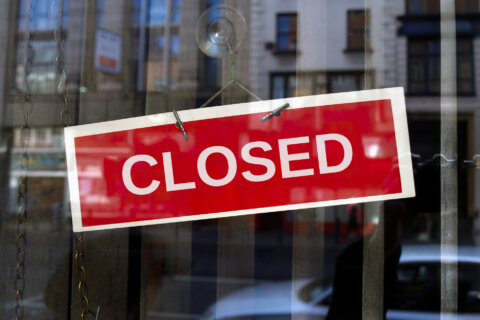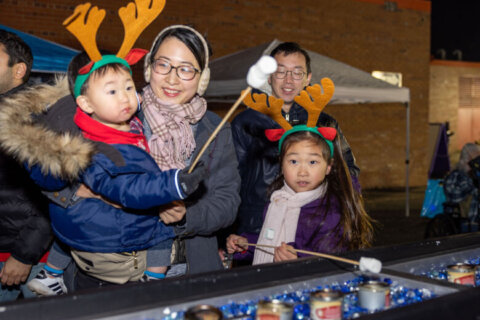For six months now, the days have grown shorter and the nights have grown longer in the Northern Hemisphere — but that’s about to reverse itself.
Winter solstice, the shortest day of 2019, will be Saturday, December 21. Or it will be Sunday, December 22. Which day is it for you? It all depends on your time zone.
CNN meteorologists Dave Hennen, Judson Jones and Brandon Miller help us understand the science and timing behind the solstice. And then we’ll explore some traditions and celebrations around the world that could inspire a travel adventure.
The science and timing behind a winter solstice
The winter solstice marks the shortest day of the year in the Northern Hemisphere, when the sun appears at its most southerly position, directly overhead at the faraway Tropic of Capricorn.
It’s the reverse in the Southern Hemisphere. There, it marks the longest day of the year — and the beginning of summer in places such as Argentina, Namibia and New Zealand.
When exactly does it occur?
The solstice usually takes place on December 21. The time that the solstice occurs and the day itself shifts because the solar year (the time it takes for the sun to reappear in the same spot as seen from Earth) doesn’t exactly match up to our calendar year.
If you want to be super-precise in your observations, the exact time of the 2019 winter solstice will be 4:19 Universal Time on Sunday. Here are some examples of when that will be for local times around the world:
— Tokyo: 1:19 p.m. Sunday
— Dubai: 8:19 a.m. Sunday
— Rome: 5:19 a.m. Sunday
— Dakar, Senegal: 4:19 a.m. (same as Universal Time)
— Philadelphia: 11:19 p.m. Saturday
— Seattle: 8:19 p.m. Saturday
— Honolulu: 6:15 p.m. Saturday
If you don’t live in one of these time zones above, the website EarthSky has a handy conversion table for your time zone. You might also try the conversion tools at Timezoneconverter.com or WorldTimeServer.com.
What causes the winter solstice to even happen?
Because the Earth is tilted on its rotational axis, we experience seasons here on Earth. As the Earth moves around the sun, each hemisphere experiences winter when it’s tilted away from the sun and summer when it’s tilted toward the sun.
Wait. Why is the Earth tilted?
Scientists are not entirely sure how this occurred, but they think that billions of years ago, as the solar system was taking shape, the Earth was subject to violent collisions that caused the axis to tilt.
What other seasonal transitions do we mark?
The equinoxes, both spring and fall, occur when the sun’s rays are directly over the equator. On those two days, everyone has an equal length of day and night. The summer solstice is when the sun’s rays are farthest north over the Tropic of Cancer, giving us our longest day and summer in the Northern Hemisphere.
Winter solstice traditions and celebrations
It’s no surprise many cultures and religions celebrate a holiday — whether it be Christmas, Hanukkah, Kwanzaa or pagan festivals — that coincides with the return of longer days.
Ancient peoples whose survival depended on a precise knowledge of seasonal cycles marked this first day of winter with elaborate ceremonies and celebrations. Spiritually, these celebrations symbolize the opportunity for renewal, a shedding of bad habits and negative feelings and an embracing of hope amid darkness as the days once again begin to grow longer.
Many of the ancient symbols and ceremonies of the winter solstice live on today.
Here are five extraordinary destinations where you can experience something magical during winter’s relentlessly long night:
UNITED KINGDOM: Cornwall and Stonehenge
Better known for pirates than the solstice, the town of Penzance on the southwest coast of England has revived a delightful array of Cornish solstice events leading up to winter solstice. The Montol Festival is a fun mix of pagan customs and more recent Christmas traditions that were once common throughout Cornwall.
Early in the week, join in caroling and other events. On the solstice, referred to here as Montol Eve, get your dancing card ready for the Guise, a community dance in which people dress in masks and other “topsy-turvy” disguises based on a 19th-century tradition of the rich dressing in rags while poorer citizens effected a “mock posh” look.
You can also don your finery for torchlit processions. The merrymaking only continues when the revelers disperse to pubs around town.
With some planning, it’s also possible to incorporate a trip to Stonehenge, the UK’s most famous site for solstice celebrations. On the winter solstice, visitors have the rare opportunity to enter the towering, mysterious stone circle for a sunrise ceremony run by local pagan and druid groups.
The trip from Penzance to Stonehenge takes less than four hours by car, making it entirely feasible to spend the night in Salisbury, the nearest town to Stonehenge, and rise before dawn for the ceremony among the stones.
SWEDEN: Santa Lucia, yule and aurora borealis
Sweden is rich with solstice traditions. Elements of the yule, Northern Europe’s ancient winter solstice celebration, are also incorporated into modern festivities, including gathering around bonfires, feasting, drinking and telling stories.
A great place to experience all of these traditions is at Skansen, an open-air, living history museum that represents life in Sweden before the Industrial Revolution and features characters dressed in period costumes.
You can marvel at this seasonal interplay of light and darkness by heading for the Arctic Circle to see aurora borealis, the Northern Lights, in the Swedish Lapland. The Aurora Sky Station in Abisko National Park is an ideal place to catch the show.
Another good spot is the tiny village of Jukkasjärvi, where you can stay at the Icehotel, which provides local guides to help you spot the lights. Bundle up and take a dog sled or snow mobile tour, then hibernate in front of a roaring fire with a steaming cup of glögg.
Icehotel, Marknadsvägen 63, 981 91 Jukkasjärvi, Sweden; +46 980 668 00
MEXICO: Land of the Maya
In Mexico, consider visiting Chichen Itza, the spectacular ancient city of temples, columns and pyramids that was once a great center of science and astronomy. The Temple of Kukulkan, with its 365 steps (one for every day of the year), is just one stunning example of the impressive engineering and astronomical feats of the Maya. No wonder this is a UNESCO World Heritage site.
Chichen Itza is a two-and-a-half hour drive from Cancun. If you’re planning to take a guided tour, choose tour operators who work with local Maya communities and use expert guides.
Private tours are another option. Although pricier, they can offer a more comprehensive experience and are often led by experts. Sacred Earth Journeys is one recommended company that offers private tours to the site.
INDIA: Makar Sankranti and kite festivals
Unlike people in other places in the Northern Hemisphere that mark the solstice in December, Hindus in India celebrate Makar Sankranti, one of the most important festivals of the year, in January. In 2020, that will fall on Wednesday, January 15, in most places in India (Gujarat state will celebrate a day earlier).
Fundamentally, it is a celebration of the sun’s journey toward the Northern Hemisphere, bringing longer days and the end of winter, which will make possible a good harvest. But Makar Sankranti is also associated with many other themes, including strong family relationships and a renewed opportunity to rid oneself of negativity and embrace a better way of living.
Different regions have various names for the festival and celebrate in a diversity of ways, usually involving bonfire pyres, feasting, singing and prayer. It’s a day when pilgrims make their way to the holy river Ganges for a spiritual cleansing.
Another popular event associated with Makar Sankranti are kite festivals, now held in cities across India.
Jaipur, Mumbai and Ahmedabad host some of the most well-known kite festivals. Kite-makers sell their wares in public markets in the days leading up to the festival, and soon the sky is filled with colorful, elaborate kites flown from balconies, stadiums, parks and beaches.
CANADA: Lantern festival in Vancouver
Vancouver’s Winter Solstice Lantern Festival is a sparkling celebration of solstice traditions from around the world. The Secret Lantern Society assembles a wide array of music, dance, food and spectacular lantern-lit processions.
Staging areas for the main events include the neighborhoods of Granville Island, Yaletown and Strathcona.
Here’s one of the best parts: Before the solstice, neighborhoods throughout Vancouver host lantern-making workshops.
For a relatively small price, you can construct and decorate your own lantern to participate in one of several processions throughout the city that lead to the indoor venues for music, dance and art making.







